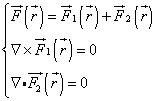| V.2 No 2 | 1 |
Theorem of curl of a potential vector |
|
|
|
Theorem of curl of a potential vector in dynamical fields Sergey B. Karavashkin and Olga N. Karavashkina Special Laboratory for Fundamental Elaboration SELF e-mail: selftrans@yandex.ru , selflab@mail.ru Abstract Here we study the circulation and curl of potential vector in dynamical fields. We prove the theorem that in dynamical fields the curl of potential vector is proportional to the vector product of unit vector of flux direction by the particular derivative of flux of vector with respect to time. With it the vector remains its potential pattern, since the circulation is conditioned by the finite velocity of wave space-propagation. We consider the applications of this theorem to acoustic and electromagnetic fields. We describe the results of experimental studying the transversal acoustic waves in gas medium, which corroborates the possibility to form the transversal wave by way of linear superposition of potential dynamical fields. Keywords: theoretical physics, mathematical physics, wave physics, vector algebra, acoustics, electromagnetic theory, dynamical potential fields. Classification by MSC 2000: 76A02, 76B47, 76N15, 76Q05, 78A02, 78A25, 78A40. Classification by PASC 2001:
03.50.-z; 03.50.De; 41.20.Jb; 43.20.+g; 43.90.+v; 46.25.Cc; 46.40.Cd
1. Introduction One of principal peculiarities of vector fields is that
''if the divergence and curl of field |
|
 |
(1) |
(the Helmholtz decomposition theorem)'' [1, p.173]. We can say that the equation |
|
| (2) | |
''is the sufficient condition for the conservative
field, i.e., for description of the field by the gradient of some potential function'' [2,
p. 89]. In other words, if Note that the definition and the conventional theorem of
curl of vector have been formulated for stationary fields in which the vector depends only
on co-ordinates, not on time. We can easy check it, seeing the argument on which |
|
| (3) | |
i.e., the
curvilinear integral of |
|
Usually this potentiality definition is extended also to dynamical fields, in that number to complex acoustic fields in gas medium. As is known, ''in liquids and gases the elastic resistance to the transversal displacement of particles does not exist, only to the volume variation, i.e. to the compression or rarefaction. So in such substances only longitudinal waves can propagate'' [3, p.114]. ''Thus we have in the vector form |
|
| (4) | |
(where |
|